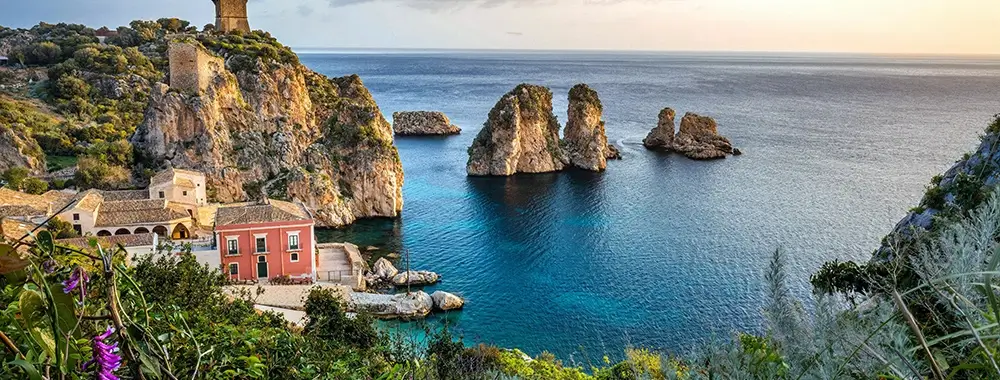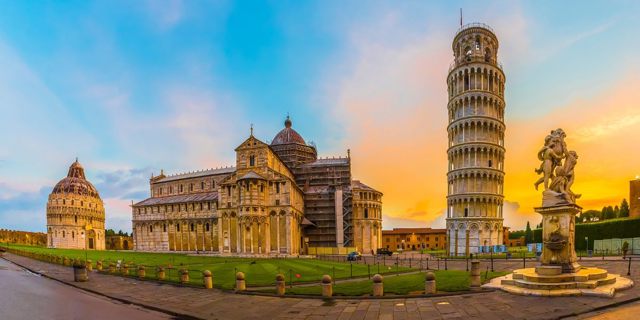
Italy
Italy: A Journey Through History, Culture, and Beauty
Italy, known as Italia in its native tongue, is a country that inspires the imagination with its breathtaking landscapes, rich historical heritage, and vibrant cultural tapestry. Located in Southern Europe, Italy is a peninsula shaped like a boot, extending into the Mediterranean Sea and sharing borders with France, Switzerland, Austria, and Slovenia. From the snow-capped Alps in the north to the sun-drenched beaches of Sicily in the south, Italy is a land of contrasts, beauty, and endless fascination.
Geography and Climate
Italy stretches over 1,100 kilometers from north to south and boasts a coastline of more than 7,600 kilometers. The country’s diverse geography includes mountain ranges such as the Alps and the Apennines, fertile plains like the Po Valley, and hundreds of picturesque islands, the largest being Sicily and Sardinia.
The climate varies widely: the north experiences colder, Alpine and continental conditions, while the south enjoys a Mediterranean climate with hot, dry summers and mild, wet winters. Major rivers like the Po, Tiber, and Arno have shaped Italy's landscape and history for centuries.

Major Cities
-
Rome – The capital city, famed for its ancient ruins, including the Colosseum, the Roman Forum, and the Vatican City, the spiritual heart of Catholicism.
- Milan – Italy’s financial powerhouse and a global capital of fashion and design.
- Florence – The cradle of the Renaissance, with world-class art, architecture, and museums.
- Venice – The city of canals, renowned for its romantic waterways and stunning palazzi.
- Naples – A vibrant city known for its rich history, archaeological sites, and as the birthplace of pizza.
- Turin – An elegant northern city, famous for its baroque architecture and automotive industry.
- Palermo – The capital of Sicily, blending Norman, Arab, and Byzantine influences.
Population and Language
Italy has a population of about 59 million people. While Italian is the official language, various regional dialects and languages such as Sicilian, Neapolitan, Sardinian, Friulian, and Ladin are spoken throughout the country. English and other European languages are commonly understood in major cities and tourist areas.
Government and Economy
Italy is a parliamentary republic with a President as head of state and a Prime Minister as head of government. The country is a founding member of the European Union, the Eurozone, the G7, and NATO.
Italy’s economy is the third largest in the Eurozone and is characterized by a mix of developed industry, agriculture, and a flourishing tourism sector. Key industries include automotive (Fiat, Ferrari, Lamborghini), fashion (Gucci, Prada, Armani), design, machinery, food and wine, and luxury manufacturing.
Culture and Heritage
Italy is a treasure trove of art and culture, boasting more UNESCO World Heritage Sites than any other country—over 50 in total. Its museums, galleries, and churches are filled with masterpieces by Michelangelo, Leonardo da Vinci, Raphael, Caravaggio, and countless others.
The Italian way of life is renowned for its emphasis on family, food, and conviviality. Festivals, traditions, and local customs play an essential role in the Italian identity, from Venice’s Carnival to Siena’s Palio horse race.
Art and Architecture
Italy’s contribution to the arts is unparalleled. The Renaissance began in Florence, changing the course of art, science, and philosophy across Europe. Architectural wonders such as the Colosseum, St. Peter’s Basilica, the Leaning Tower of Pisa, and the Duomo of Milan attract millions of visitors each year. Modern Italian design, from Vespa scooters to cutting-edge fashion, continues to set trends worldwide.

Cuisine
Italian cuisine is beloved and imitated the world over. It is based on fresh, high-quality ingredients and regional traditions. Each region boasts its own specialties—from Neapolitan pizza and Roman carbonara to Tuscan ribollita, Sicilian cannoli, and Parma’s prosciutto.
The Italian meal structure typically includes antipasto (appetizer), primo (first course, often pasta or risotto), secondo (main course, usually meat or fish), contorno (side dish), and dolce (dessert). Italian coffee, particularly espresso and cappuccino, is an integral part of daily life, as is gelato, Italy’s famous artisanal ice cream.
Wine and Beverages
Italy rivals France as the world’s leading wine producer, with regions such as Tuscany, Piedmont, and Veneto producing renowned varieties like Chianti, Barolo, and Prosecco. Aperitivo culture, where people gather for drinks and snacks in the early evening, is a cherished ritual.
Tourism Highlights
Italy welcomes millions of tourists annually, drawn by its art, history, natural beauty, and warm hospitality. Some must-see destinations include:
- The Colosseum and Roman Forum (Rome): Ancient wonders at the heart of the Eternal City.
- The Vatican Museums and Sistine Chapel: Home to Michelangelo’s legendary frescoes.
- Florence’s Uffizi Gallery and Duomo: Hubs of Renaissance art and architecture.
- Venice’s Grand Canal and Piazza San Marco: Unique urban marvels built on water.
- The Amalfi Coast: Dazzling cliffs, turquoise waters, and charming villages.
- Pompeii and Herculaneum: Archaeological sites frozen in time by Mount Vesuvius’s eruption.
- The Lakes District: Northern lakes such as Como, Garda, and Maggiore, celebrated for their scenic beauty.
- Dolomites and Alps: World-class skiing, hiking, and adventure sports.
- Sicily and Sardinia: Islands with unique cultures, ancient ruins, and pristine beaches.
Education and Innovation
Italy is home to some of the world’s oldest universities, including the University of Bologna (founded in 1088) and the University of Padua. Today, Italian universities excel in architecture, design, engineering, and the humanities. The country has a tradition of scientific and technological innovation, with figures such as Galileo, Fermi, and Marconi making lasting impacts.
Sports and Lifestyle
Football (soccer) is Italy’s national passion, with legendary clubs like Juventus, AC Milan, and Inter Milan. Italians also enjoy cycling, motorsports (especially Formula 1 and MotoGP), basketball, volleyball, and winter sports in the Alps. The Italian lifestyle values leisure, good food, and time spent with friends and family.

Travel Tips
-
Currency: Euro (€)
- Time Zone: Central European Time (CET), UTC+1
- Best Time to Visit: Spring (April-June) and Autumn (September-October) for pleasant weather and fewer crowds
- Transport: Italy has an extensive high-speed rail network, efficient domestic flights, and well-developed roadways. Major cities have public transport systems, and renting a car is popular in rural regions.
- Etiquette: Italians greet with a handshake or cheek kisses among friends. Dress well when dining out or visiting churches. Tipping is appreciated but not obligatory.
Fun Facts
-
Italy has more masterpieces per square kilometer than any other country in the world.
- The Italian language evolved from Latin, the language of the Roman Empire.
- The world’s oldest bank, Monte dei Paschi di Siena, was founded in 1472 and still operates today.
- Pizza originated in Naples in the 18th century.
- Italy is home to more than 4,000 museums and thousands of historical churches.
Italy is a country where every corner tells a story from the glory of Ancient Rome to the elegance of the Renaissance, from the rolling vineyards of Tuscany to the dramatic coastline of Liguria. Whether you’re a lover of art, a seeker of culinary delights, or an adventurer at heart, Italy promises memories that will linger long after your journey ends. Explore Italy, and discover la dolce vita the sweet life awaiting you in every piazza, trattoria, and sunlit piazza.



